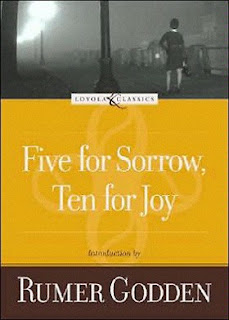 Here's the Book Blogger Hop question for this week:
What is your favorite spooky book?
The Bad Catholic Answer: The House Next Door by Anne Rivers Siddons. Something just ain't right with that brand new designer home in suburban Atlanta. Do the neighbors just have bad luck or is it something much more sinister?
Here's the Book Blogger Hop question for this week:
What is your favorite spooky book?
The Bad Catholic Answer: The House Next Door by Anne Rivers Siddons. Something just ain't right with that brand new designer home in suburban Atlanta. Do the neighbors just have bad luck or is it something much more sinister?
Saturday, October 15, 2011
Book Blogger Hop
 Here's the Book Blogger Hop question for this week:
What is your favorite spooky book?
The Bad Catholic Answer: The House Next Door by Anne Rivers Siddons. Something just ain't right with that brand new designer home in suburban Atlanta. Do the neighbors just have bad luck or is it something much more sinister?
Here's the Book Blogger Hop question for this week:
What is your favorite spooky book?
The Bad Catholic Answer: The House Next Door by Anne Rivers Siddons. Something just ain't right with that brand new designer home in suburban Atlanta. Do the neighbors just have bad luck or is it something much more sinister?
Thursday, October 6, 2011
Rumer Godden's FIVE FOR SORROW, TEN FOR JOY
Rumer Godden (1907 - 1998) was a prolific author who wrote over sixty books during the course of her long life. Godden was the author of the three best novels of all time about nuns: Black Narcissus (1939), In This House of Brede (1969), and Five for Sorrow, Ten for Joy (1979).
In 1979, when Five for Sorrow, Ten for Joy was published, Rumer Godden was seventy two years old and had led a long and distinguished career as a best selling author. As her biographerAnne Chisolm notes,
“It was a time when novels like Rumer’s were in a critical and commercial shadow; long disregarded by the fashionable and avant garde, her books were too gentle and well-mannered for a mass readership fed by blockbusters of the Jackie Collins or Harold Robbins variety.”
Chisolm notes that in her seventies Godden wrote eight books. Godden was still writing novels well into her eighties. Her last book, Cromartie vs. the God Shiva, was published in 1997.
Rumer Godden
“Five for Sorrow, Ten for Joy (1979) was a novel about an order of French Catholic nuns, the Dominican Sisters of Bethany, who worked with prisoners and prostitutes. To write the story of Vivi, a child who grows up in a brothel, and the madam turned nun who tries to help her, Rumer spent six months improving her French; she then enlisted Dorothy Watson to go with her to France to visit courts, prisons and the back-streets of Paris. Rumer was not above a little string-pulling to get what she wanted: the British Ambassador in Paris was asked to pass on a letter to the French justice minister from Harold Macmillan, who vouched for Rumer as ‘a person of the highest probity and discretion,’ who would be willing to submit her book for approval before publication. Dorothy Watson, observing Rumer at work, was impressed with her stamina and determination. They attended a murder trial, visited the women’s prison at Rennes and were driven round the roughest quarters of Paris in the small hours; Rumer then went to stay at the convent at Fontenailles where many of the postulants were ex-prisoners. Two of the Sisters of Bethany were her special advisors. . . . Rumer made sure that in return for their help the Sisters of Bethany benefited financially from the book. She also took an interest in the small, impoverished community that the order had set up in north London. When she found out they could not afford to furnish their chapel, she undertook to do it by persuading ‘everyone who had benefited from my writing’ to help. . . . The book attracted some excellent reviews; the Financial Times called it ‘a very readable and dramatic story of manipulation, violence, double-dealing and redemption,’ while Auberon Waugh in the Evening Standard said it was ‘a first-class story, with a nice and unusual plot.’ *
Five for Sorrow, Ten for Joy is the story of Elizabeth Fanshaw. Elizabeth, known as Lise, is an orphan who has been reared by her spinster aunt. Joining the British Army as a teenager during World War II, Lise is sent to France as a driver. In Paris, Lise is seduced by Patrice, the owner of a high class brothel. After becoming Patrice's lover, Lise is forced into a life of prostitution. Lise becomes known as La Balafree, "the branded one'" after she is accidentally cut across the face in a fight between Patrice and a client who has fallen in love with her. Ultimately, Lise becomes the brothel's madame and manages the house for Patrice and his brother Emile.
Lise rescues a young girl named Vivi. Vivi had been the victim of incest at the hands of her father and had been given refuge in an insane asylum during the German occupation of France. Lise finds Vivi living on the streets of Paris and about to be arrested as a vagrant. As Vivi gets older she becomes more beautiful. Tension ensues when Patrice removes Lise as his mistress and replaces her with young Vivi. Vivi, however, becomes bored with Patrice and seduces Luigi, a young Italian delivery boy. Lise helps Vivi to escape the brothel and run away with Luigi. When Patrice discovers that Vivi is gone, Lise is savagely beaten. About a year later, Lise gets information that Patrice is about to kidnap Vivi and force her back into a life of prostitution. Lise follows Patrice to Vivi’s doorstep where she shoots and kills him. Lise has been mistaken, however. It turns out that Vivi, now bored with her husband and neglectful of her baby, had herself contacted Patrice and asked him to take her back.
Lise is sentenced to 15 years in prison for manslaughter. During her years in prison, Lise becomes acquainted with the Sisters of Bethany who come to minister to the prisoners. While still in prison, Lise begins preparing for religious life, and makes plans to enter the Sisters of Bethany following her release.
Another prisoner, a young girl named Lucette, is released from prison at the same time as Lise. Although Lise tries to get rid of her, Lucette looks up to Lise as a role model and is determined to follow Lise wherever she goes. Lise then enters the convent and begins the long road to become a fully professed nun.
Two real life Sisters of Bethany hold up a picture of the founders of the order,
Mother Henri Dominque and Father Lataste, which was made by a prisoner.
Five for Sorrow, Ten for Joy is about the intersection of Evil and Divine Grace in the lives of these three women: Lise, Vivi and Lucette. The title, Five for Sorrow, Ten for Joy, is a reference to the prayers of the rosary (sorrowful mysteries, joyful mysteries, and glorious mysteries). When Lise finds Vivi on the streets of Paris, Vivi is carrying a rosary. Later, after Vivi has betrayed Lise at her trial for murdering Patrice, Vivi sends the rosary to Lise in prison. Heartbroken and angry, Lise breaks the strand of beads in two and sends it back to Vivi. When Lise becomes a nun, although she intends to take the name "Sister Mary Lise of the Cross," she finds herself saying "Soeur Marie Lise du Rosaire" or "Sister Mary Lise of the Rosary." Guilty over her treatment of Vivi, Lise is unable to say the rosary. Lise's relationship to the prayers of the rosary and what happens to Vivi's broken rosary is an important theme of the novel.
Our Lady of the Rosary
As in a number of her other novels, Godden has a unique story telling technique with relation to time. Rather than just telling the story in a linear fashion, the novel, which is set in the present of the 1970's, is put together as a series of flashbacks to different periods in Lise's life. The narrative is advanced through the past and present, with more and more of Lise's life being revealed throughout the novel.
Although Godden has been accused of merely writing a rehash of In This House of Brede, I think that Five for Sorrow, Ten for Joy is a very different kind of book. Whereas In This House of Brede was concerned mostly with the inner action of the spiritual life, the subject matter of this novel can be described as a lurid melodrama.
Although some will find the melodramatic elements of the story to be over the top, Five for Sorrow, Ten for Joy, has to rank as one of the best Catholic novels of the twentieth century. It is also a very entertaining read with sufficient twists and suspense to keep the reader enthralled. Rumor Godden was a very talented writer, and even when dealing with this potboiler material does not disappoint. On a scale of one to five, the Bad Catholic gives Five for Sorrow, Ten for Joy five Rosaries.
______________________
*Chisolm, Anne, Rumer Godden: A Storyteller’s Life, Greenwillow Books (1998) p. 281 - 282
*Chisolm, Anne, Rumer Godden: A Storyteller’s Life, Greenwillow Books (1998) p. 281 - 282
Subscribe to:
Posts (Atom)










